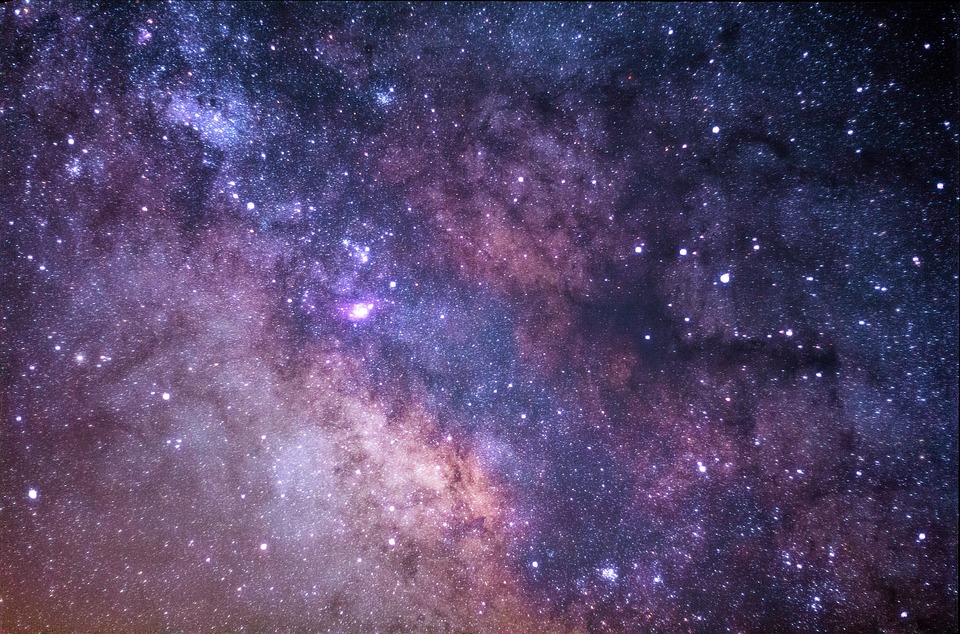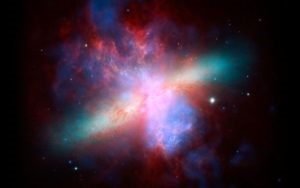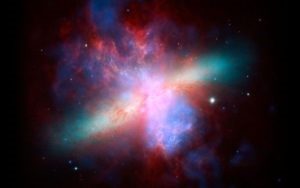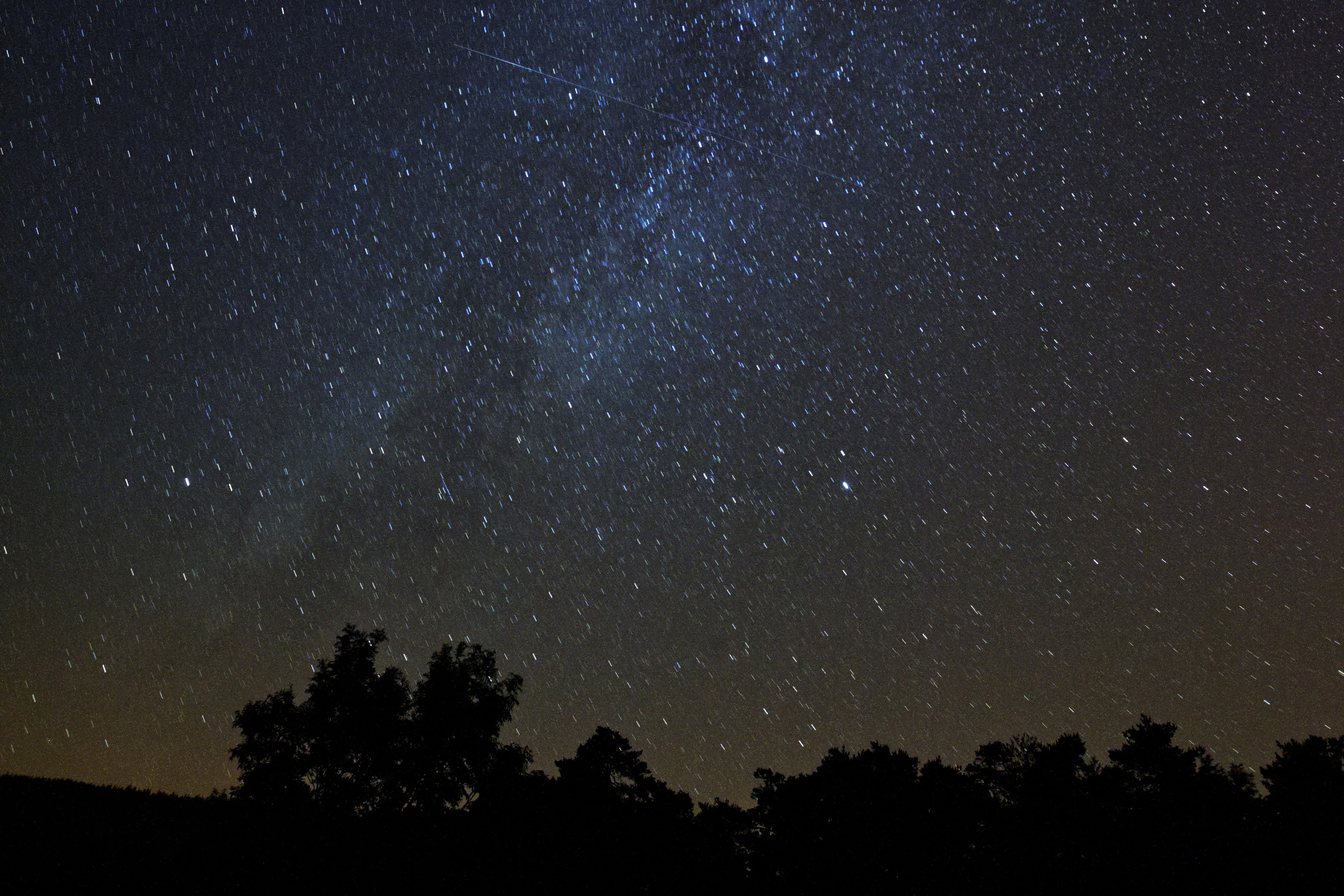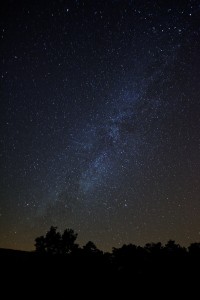 We have discussed on the blog before the potential flaws in the mere statistical presumption that because there are so many stars there must be billions of other Earth-like planets in the universe that likely support life similar to ours. Why? Because it is not just one or two things that make Earth what it is; it is many, many essential things that make Earth capable of sustaining life for long enough that our civilization has been able to emerge. As these essential qualities are factored into the equation, the probability of sustained conditions capable of hosting advanced life and a civilization of intelligent beings drops very quickly.
We have discussed on the blog before the potential flaws in the mere statistical presumption that because there are so many stars there must be billions of other Earth-like planets in the universe that likely support life similar to ours. Why? Because it is not just one or two things that make Earth what it is; it is many, many essential things that make Earth capable of sustaining life for long enough that our civilization has been able to emerge. As these essential qualities are factored into the equation, the probability of sustained conditions capable of hosting advanced life and a civilization of intelligent beings drops very quickly.
Here are some of the factors that make Earth what it is:
- It is at just the right distance from the sun so that water is warm enough to melt, but not so hot as to boil and steam away into space. Water is also able, in this habitable zone, to both evaporate and condense at lower levels in the atmosphere, thus permitting a more even distribution of water and a cycle of water over dry land known as precipitation.
- It is in a “habitable zone” in the galaxy. Radiation and the presence of wandering planetoids make life closer to the center of galaxies unlikely.
- Its orbit is a nearly perfect circle rather than an “eccentric” (i.e., steep or elongated) ellipse such as that of some other planets. Steep, elliptical orbits take a planet relatively close to and then far from the sun, causing great variances in warmth and light. Earth’s almost perfectly circular orbit keeps its distance from the sun’s heat and light relatively constant.
- Its molten core and volcanism generate magnetic fields or belts that protect it from the most harmful rays of the sun. Volcanism also plays a role in helping generate the atmosphere and in cycling rich minerals widely.
- Its sun is just the right kind of star, putting out a fairly steady amount of energy. Other types of stars are more variable in their output, making life impossible due to the extremes in warmth and light.
- Its fairly rapid rotation reduces the daily variation in temperature. It also makes photosynthesis possible since there is enough sunlight all over the planet.
- Its axis is tilted just enough relative to its orbital plane to allow seasonal variations that help complex life, but not so tilted as to make the seasons too extreme.
- Its moon causes tides that are just large enough to permit tidal zones (a great breeding ground for diverse forms of life), but not so severe as to destroy life.
- Two nearby “gas giants” (Jupiter and Saturn) attract and “catch” many wandering asteroids and comets, often keeping them from hitting Earth.
I have written more on these matters in at least two other articles:
- Life in the Balance – And why Earth-like planets may be rare
- The Earth is a Rare Jewel. A Meditation on the Glory of God in a New Discovery about our Planet
I was pleased to learn of a recent article in the Wall Street Journal that sets forth a “rare Earth” perspective and also points to the conclusion that Earth’s perfect conditions are so astonishing as to shout “intentional design.” The article, written by Eric Metaxas, is entitled Science Increasingly Makes the Case for God – The odds of life existing on another planet grow ever longer. Intelligent design, anyone?
I’d like to present some excerpts in bold italics along with a little commentary of my own in plain, red text.
In 1966 … The same year Time [Magazine] featured the now-famous headline [Is God Dead?], the astronomer Carl Sagan announced that there were two important criteria for a planet to support life: The right kind of star, and a planet the right distance from that star. Given the roughly octillion—1 followed by 24 zeros—planets in the universe, there should have been about septillion—1 followed by 21 zeros—planets capable of supporting life.
Notice how silly Sagan’s pronouncements seem now. Yet when he said them, many bowed their heads to “modern science.” And those of us who had “infantile” notions of a “God” or who thought that we humans were somehow special or unique were told we had to let our little “myths” give way to “hard science.” Almost anybody can recall Sagan saying with his erudite accent, “billions and billions …” as he referred to the likelihood of life “out there.”
I personally have no problem with science changing its teaching as new evidence comes in. But I DO have a problem with people who idolize science as the definitive word on everything, and with some (not all) scientists who get credit for having advanced the “definitive” answer to all things.
Can we please get over this “science as a substitute for religion” obsession of the modern age? Let science be science, a discipline that deals with empirical evidence from the material world. New information is always coming in. It is the nature of science to provide likely answers (e.g., hypotheses or formulas) rooted in current data. Physical science also focuses especially on what philosophy terms “material” and “efficient” causality. Catholic theology (faith), however, is rooted in definitive answers based on the unchanging revelation of God. It is not usually related to efficient and material casualty, but especially to final and formal causality.
Proper Catholic theology does not compete with the physical sciences and holds that whatever is true in the physical sciences will not contradict theological truth.
The problems and conflicts occur when many today want to hold the theories of physical science as conclusive (which quite often they are not) or to permit the physical sciences to claim to be able to answer or refute things outside the physical sciences, in the metaphysical order. For example, some scientists insist that the universe is the result of blind, random chance. But science cannot prove this and therefore should not make such claims. Formal and final causality are largely outside the realm of science. What science reasonably can say is that the existence of God is not something that it can definitively prove or reject. Science looks to secondary and material causes and must the leave metaphysical matters out of its discussions or conclusions.
The problems on the religious side come when some seek to claim that religious accounts of the origin of the world and the causes of things are meant to be understood as scientific language. Yet often, religious accounts of origins and causes use allegory, metaphor, symbolism, and epic stories to convey truths and they need not be taken as literal, scientific accounts. Religion looks more to primary cause and to final and formal causality.
Science and theology are often talking about the same things but using different perspectives. Hence, they need not be seen as at war if each respects its own discipline and territory.
With such spectacular odds [which Sagan set forth], the Search for Extraterrestrial Intelligence [SETI], a large, expensive collection of private and publicly funded projects launched in the 1960s, was sure to turn up something soon. Scientists listened with a vast radio telescopic network…But as years passed, the silence from the rest of the universe was deafening … bupkis—0 followed by nothing. Some reading this will want to get defensive and say, “There are lots of reasons for the silence, including the vast distances of space.” But read on …
What happened? As our knowledge of the universe increased, it became clear that there were far more factors necessary for life than Sagan supposed. His two parameters grew to 10 and then 20 and then 50, and so the number of potentially life-supporting planets decreased accordingly. The number dropped to a few thousand planets and kept on plummeting … Today there are more than 200 known parameters necessary for a planet to support life—every single one of which must be perfectly met, or the whole thing falls apart. [e.g.] Without a massive planet like Jupiter nearby, whose gravity will draw away asteroids, a thousand times as many would hit Earth’s surface. The odds against life in the universe are simply astonishing.
I listed just a few of those 200 parameters above. Note, too, that the argument being advanced is not merely a statistical one. The argument being advanced is one known as “irreducible complexity.”
Irreducible complexity refers to the argument that for complex systems (like life) to exist, many things must all come together in just the right way for the system to exist or work at all. It is not workable if just some of the things are present. All must be present for the system to exist and work.
Thus, for our eyes to work, a LOT of things need to be in place and “just so.” One cannot have just a retina. There must also be a cornea, fluid in just the right condition, just the right sort of tissue to form the lens, just the right distance between the cornea and the retina, just the right sort of muscles to adjust for the light conditions, just the right sort of photosensitive cells in the retina, etc. And those are just the macroscopic requirements. There are also many microscopic requirements of every cell, and every part of every cell in the eye that must come together just so for the eye to be the eye and to function properly.
It is hard to imagine how things of this complexity could simply come together randomly and blindly. But whatever the origin of complex systems, the statistical likelihood of them existing at all gets very small, very quickly when we consider everything that must happen for them to exist and function. And that is the case being made here about Earth and the complexity of life here.
Even SETI proponents acknowledged the problem … The early estimates … may no longer be tenable.”
As factors continued to be discovered, the number of possible planets hit zero, and kept going. In other words, the odds turned against any planet in the universe supporting life, including this one. Probability said that even WE shouldn’t be here.
Yet here we are, not only existing, but talking about existing. What can account for it? Can every one of those many parameters have been perfect by accident? At what point is it fair to admit that science suggests that we cannot be the result of random forces? … The appearance of design is overwhelming … the hypothesis that there is a Creator … gains in credibility as the best explanation of why we are here.”
I think today that many who bristle at “intelligent design” do so more from a visceral and perhaps anti-religious stance than from a truly scientific one. As said above, I am not asking scientists to declare that science can prove God exists. That is not the purpose of science. Neither am I asking them to accept the Judeo-Christian concept of God.
But if I went to Mars and found a fully functioning computer lab in a cave there I would be scientifically justified in concluding that intelligent life had put it there. I might not even be sure that it was “Martians” who had created it. Maybe the Russians had secretly gotten to Mars before us and left it there. But simply to conclude that there was strong evidence that the computer lab was designed and built by intelligent beings would not be unscientific.
And that is true here, too. The more we learn of the incredible complexity of life and of ecosystems and their irreducible complexity, the more reasonable it seems to posit an intelligent cause to it all, or to theorize that the many necessary elements were intentionally brought together by some outside force that is intelligent or purposeful. I do not ask scientists to suddenly line up to enter RCIA, only that they draw reasonable conclusions even if they are only provisional (as are most scientific conclusions).
Well, the combox is open for comments. I’d like to propose some ground rules because, sadly, most discussions on these sorts of topics generate more heat than light. (The Wall Street Journal article generated a LOT of comments: 2197 COMMENTS.)
- PLEASE avoid personal attacks. Write to the issue.
- PLEASE do not address comments or questions to me. Speak to the issue and to one another.
- Surely, I always appreciate kind remarks about the article, etc.
- But if you have a critique of the article, please remember that I am not the point; the article is the point.
- Quote the article and say what you think or why you disagree, and interact with one another.
- There is no need to “take down” the blogger. Even if you think I am an idiot or am hopelessly misinformed, that it not the point; the article is the point.
- Say what you mean and mean what you say, but don’t say it mean.

